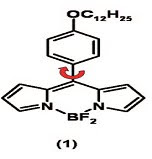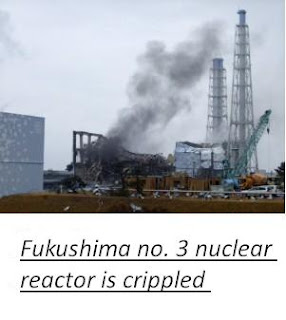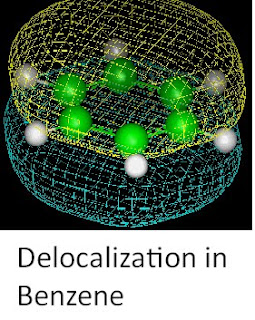Anant Babu Marahatta
Tohoku University
Japan
Oxalic acid is a constituent of many house hold products. It is found in many disinfectants, household bleach, metal cleaning liquids, antirust products and furniture polishes. Oxalic acid is a crystalline, colorless substance and is efflorescent. This means it tends to become powdery on account of loss of water of crystallization. It has got its name from the Greek word Oxalis, which means sorrel. It occurs in sorrel plant and because of this the French chemist Lavoiser in 1787 named it as Oxalic acid. It occurs in the leaves and young stalk of Rhubarb, Spinach and even Cabbage. Sorrel is succulent acid herb used in salads.
Accidental poisoning has been known to occur after a hearty meal of rhubarb or sorrel .Food rich in oxalate can also lead to kidney stones because kidney stones are generally made up of oxalates. Crystals of oxalic acid are similar in appearance to those of magnesium sulphate (Epsom salt) and zinc sulphate. Because of this similarity, cases of accidental poisoning have occurred. Magnesium sulphate in doses of 15g is used as a laxative (to facilitate the evacuation of Bowels) and is non toxic. Since oxalic acid, a dangerous poison is so similar looking to Epsom salt-a commonly used drug as laxative medicine-it is necessary to be able to differentiate between the two. If the doctor or nurse fails to differentiate between the two, accidental poisonings may occur. Two patients at the mental hospital in Scotland had died in 1956 after receiving doses of oxalic acid which was mistaken for Epsom salts. Similarly zinc sulphate is also commonly used drug and looks very similar to the dangerous poison, oxalic acid. Thus in order to remain in the safe side, it is very much essential to be able to differentiate between them.
HOW DO DOCTORS DIFFERENTIATE BETWEEN THE TWO?
Since if we taste a small amount of crystal of each, oxalic acid is sour in taste and magnesium sulphate is nauseatingly bitter and zinc sulphate is metallic bitter. But surely, this is not the best method to find out the poison. The reaction of oxalic acid is strongly acidic but that of zinc sulphate is slightly acidic and magnesium sulphate is neutral. On application of heat, Oxalic acid sublimes while the rest of the two salts remain fixing. When each salt is allowed to react with sodium carbonate, oxalic acid shows effervescence but no precipitate while the other two salts show no effervescence but a give white precipitate of metal carbonates. But perhaps the easiest test is to see whether stains of ink will disappear by a solution of one of these salts or not. Since, a solution of oxalic acid makes the stain disappear ,the other two salts can not do that That is why oxalic acid is used in products like ink removers and furniture polishes. It is also used in households as a “bleach” to remove stains or to clean metals notably brass or leather and also used in calico-printing (cotton cloth especially plain white and unbleached).
CAN OXALIC ACID BE USED FOR HOMICIDE?
No that is not possible .because of its sour taste; it has not been used for homicide. Oxalates have however been used to procure abortion by vaginal injection.
HOW DOES OXALIC ACID AFFECT THE HUMAN BODY?
Oxalic acid has both a local and systemic action on the body. By local action, i.e. the action on stomach and intestinal walls with which it comes in contact. By systemic effect i.e. remote effects on organs with which it does not really come in contact. Oxalic acid readily corrodes the mucus membrane of the digestive tract. Unlike corrosive mineral acids and alkalis, oxalates do not lose their poisonous properties when diluted. On the contrary, dilute solution of oxalates can cause grave systemic effects. Oxalic acid however rarely damages the skin.
As far as systemic effects are concerned, large doses of oxalic acid can cause death due to shock. Oxalates can readily combine with the Calcium ion in the body tissues, causing a precipitous fall in the level of ionized calcium. This can cause muscle irritability, tetany and convulsions and irregular action and slowing of the heart. Since all muscle cells in the body are very much dependent on calcium for their proper functioning and it includes heart muscle too.
WHAT ARE THE SIGNS AND SYMPTOMS OF OXALIC ACID POISONING?
The symptoms of the oxalic acid poisoning depend on the size and concentration of the dose. A large concentrated dose would kill with in a couple of hours by shock or hypocalcaemia (lowering of calcium levels in the blood).A large dilute dose would cause kidney failure. There is immediate sour or bitter taste associated with a burning sensation in the mouth, throat and food pipe because of the corrosive action of the oxalic acid. There is eructation (formal belching-emit wind noisily through the mouth), distension(Swell out by pressure) of abdomen, thirst, nausea and vomiting. The vomit has a coffee ground appearance because the oxalic acid badly corrodes the stomach walls. There may be bloody vomiting for the same reason. Finally shock supervenes and death occurs. Acute poisoning occurs when the moderately large dose is taken and in such cases, the person survives up to 48 hrs. The symptoms are muscle irritability, tenderness, tetany, convulsions, numbness (paralyzed) and tingling (feel a slight stinging) of the finer tips and legs, cardiac irregularity, slowing of the heart, ventricular fibrillation (irregular and fast beating of the ventricles of the hearts).Delayed poisoning may occur when a smaller dose is taken. This may lead to renal failure and uremia. Death occurs with in 5-14 days.
HOW EXACTLY DID THE DOCTOR MAKE OUT THAT IT WAS THE CASE OF OXALIC ACID POISONING?
The person poisoned with the oxalic acid runs down the strange streaks from the angles of the mouth. Due to corrosion, there is whitening or yellow-white discoloration of the lips, lining of the mouth and upper surface of the tongue. The lining of the stomach in oxalic acid poisoning is blackened by the production of acid haematin. There may be superficial corrosion. The stomach may contain fresh or altered blood. Furthermore crystals of calcium oxalate can be demonstrated in scrapings of the stomach mucosa. The kidneys of a person dying of oxalic acid poisoning are congested and swollen with oedema (accumulation of excess fluid in body tissues). The renal tubules even contain the oxalate crystals. Thus doctors may sure it is the case of oxalic acid poisoning.



















































